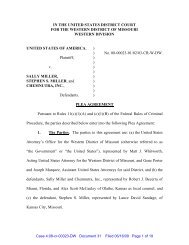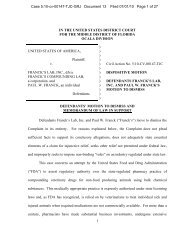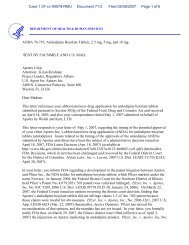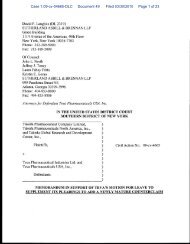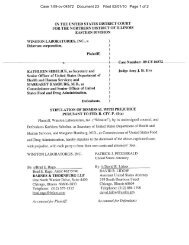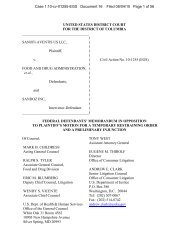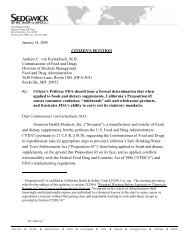first edition (1980) of the Orange Book - FDA Law Blog
first edition (1980) of the Orange Book - FDA Law Blog
first edition (1980) of the Orange Book - FDA Law Blog
Create successful ePaper yourself
Turn your PDF publications into a flip-book with our unique Google optimized e-Paper software.
4. Erythromycin stearate Tablets - All manufacturers <strong>of</strong> erythromycinstearate tableted products demonstrated <strong>the</strong> bioequivalency <strong>of</strong> <strong>the</strong>ir productsas a conditien <strong>of</strong> applicatien approval. These bioequivalence studies wereperformed under fasting conditions and, as a result, all firms were requiredto label <strong>the</strong>ir products to be· taken en an empty stomach. Since that timesane firms have demonstrated that <strong>the</strong>ir products also may be taken immediatelybefore meals, but not with meals, and still achieve acceptable bloodlevels. On <strong>the</strong> basis <strong>of</strong> such studies, <strong>FDA</strong> has approved those products to belabeled accordingly. At <strong>the</strong> ·same time, <strong>the</strong> agency stresses that optimalabsorption for any erythromycin stearate tablet is achieved when <strong>the</strong> drug isadministered under fasting conditiens, and recorrmends that prescriptionsinclude instructions regarding administratien in relation to meals. Whenerythromycin stearate tablets are to be administered under fasting conditions,<strong>the</strong> agency believes that any listed brand coded AB may be considered<strong>the</strong>rapeutically equivalent. If erythromycin stearatE! is to be takenimnediately before meals, only those products with labeling that providesfor such administratien should be dispensed. Erythromycin stearate tabletedproducts have been designated <strong>the</strong>rapeutically equivalent (AB) in <strong>the</strong> Listbecause all <strong>of</strong> <strong>the</strong> products produce equivalent blood levels provided <strong>the</strong>drug is prescribed and administered in accordance with <strong>the</strong> conditions <strong>of</strong> usein <strong>the</strong> labeling. Prescribers and dispensers are advised to be familiar with<strong>the</strong> labeling <strong>of</strong> <strong>the</strong>se products.5. Imipramine HCI Tablets - The agency has determined that certainbrands <strong>of</strong> imipramine tablets may undergo deterioration in <strong>the</strong>ir dissolutionrate as <strong>the</strong> tablets age on <strong>the</strong> shelf, even under normal conditions <strong>of</strong>storage. <strong>FDA</strong> will be proposing to <strong>the</strong> USP a new dissolutien rate standardto solve this problem. Those products that already meet <strong>the</strong> proposed newstandard are coded AB. Products without data to support satisfactorydissolution are coded BP.6. Amino Acid and Protein Hydrolysate Injections - Of <strong>the</strong>se tWo types<strong>of</strong> products, only parenteral amino acid mixture solutions presently arelisted as approved and marketed under new drug applicatiens. Proteinhydrolysate injections. are omitted because <strong>of</strong> safety problems. Because<strong>the</strong>se products differ by <strong>the</strong> amount and kinds <strong>of</strong> amino acids <strong>the</strong>y contain,tooy are not considered pharmaceutical equivalents. Thus, it is on thisbasis that <strong>FDA</strong> cannot evaluate <strong>the</strong>se products as <strong>the</strong>rapeutic equivalents.At <strong>the</strong> same time, <strong>the</strong> agency believes that it is appropriate to point outthat where nitrogen balance is <strong>the</strong> sole <strong>the</strong>rapeutic objective and individualamino acid content is not a consideration, pharmaceutical alternativeproducts with <strong>the</strong> same total amount <strong>of</strong> nitrogen content may be considered as<strong>the</strong>rapeutically equivalent.7. Prednisone Tablets - Because <strong>of</strong> known bioinequi valence and <strong>the</strong>r apeutic inequivalence problems, <strong>the</strong> USP recently adopted a new in vitrodissolution test correlated with in vivo bioequivalence data. All prOductsI - 18



